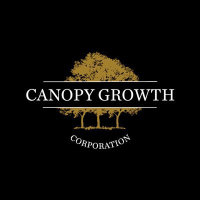
Canopy Growth Corp
TSX:WEED


| US |

|
Johnson & Johnson
NYSE:JNJ
|
Pharmaceuticals
|
| US |

|
Berkshire Hathaway Inc
NYSE:BRK.A
|
Financial Services
|
| US |

|
Bank of America Corp
NYSE:BAC
|
Banking
|
| US |

|
Mastercard Inc
NYSE:MA
|
Technology
|
| US |

|
UnitedHealth Group Inc
NYSE:UNH
|
Health Care
|
| US |

|
Exxon Mobil Corp
NYSE:XOM
|
Energy
|
| US |

|
Pfizer Inc
NYSE:PFE
|
Pharmaceuticals
|
| US |

|
Palantir Technologies Inc
NYSE:PLTR
|
Technology
|
| US |

|
Nike Inc
NYSE:NKE
|
Textiles, Apparel & Luxury Goods
|
| US |

|
Visa Inc
NYSE:V
|
Technology
|
| CN |

|
Alibaba Group Holding Ltd
NYSE:BABA
|
Retail
|
| US |

|
3M Co
NYSE:MMM
|
Industrial Conglomerates
|
| US |

|
JPMorgan Chase & Co
NYSE:JPM
|
Banking
|
| US |

|
Coca-Cola Co
NYSE:KO
|
Beverages
|
| US |

|
Walmart Inc
NYSE:WMT
|
Retail
|
| US |

|
Verizon Communications Inc
NYSE:VZ
|
Telecommunication
|
Utilize notes to systematically review your investment decisions. By reflecting on past outcomes, you can discern effective strategies and identify those that underperformed. This continuous feedback loop enables you to adapt and refine your approach, optimizing for future success.
Each note serves as a learning point, offering insights into your decision-making processes. Over time, you'll accumulate a personalized database of knowledge, enhancing your ability to make informed decisions quickly and effectively.
With a comprehensive record of your investment history at your fingertips, you can compare current opportunities against past experiences. This not only bolsters your confidence but also ensures that each decision is grounded in a well-documented rationale.
Do you really want to delete this note?
This action cannot be undone.

| 52 Week Range |
3.75
20.45
|
| Price Target |
|
We'll email you a reminder when the closing price reaches CAD.
Choose the stock you wish to monitor with a price alert.

|
Johnson & Johnson
NYSE:JNJ
|
US |

|
Berkshire Hathaway Inc
NYSE:BRK.A
|
US |

|
Bank of America Corp
NYSE:BAC
|
US |

|
Mastercard Inc
NYSE:MA
|
US |

|
UnitedHealth Group Inc
NYSE:UNH
|
US |

|
Exxon Mobil Corp
NYSE:XOM
|
US |

|
Pfizer Inc
NYSE:PFE
|
US |

|
Palantir Technologies Inc
NYSE:PLTR
|
US |

|
Nike Inc
NYSE:NKE
|
US |

|
Visa Inc
NYSE:V
|
US |

|
Alibaba Group Holding Ltd
NYSE:BABA
|
CN |

|
3M Co
NYSE:MMM
|
US |

|
JPMorgan Chase & Co
NYSE:JPM
|
US |

|
Coca-Cola Co
NYSE:KO
|
US |

|
Walmart Inc
NYSE:WMT
|
US |

|
Verizon Communications Inc
NYSE:VZ
|
US |
This alert will be permanently deleted.
 Canopy Growth Corp
Canopy Growth Corp
Canopy Growth Corp
Investor Relations
Canopy Growth Corp. engages in the production and sale of medical cannabis. The company is headquartered in Smiths Falls, Ontario and currently employs 3,259 full-time employees. The company went IPO on 2010-06-04. The firm operates through two segments: Global Cannabis and Other Consumer Products. The Global Cannabis segment encompasses the production, distribution and sale of a diverse range of cannabis and cannabinoid-based consumer products in Canada and internationally pursuant to applicable international and domestic legislation, regulations and permits. The Other Consumer Products segment comprises the production, distribution and sale of consumer products, including Storz & Bickel vaporizers; This Works beauty, skincare, wellness and sleep products; BioSteel sports nutrition beverages, mixes, protein, gum and mints; and other revenue sources.

Canopy Growth Corp. engages in the production and sale of medical cannabis. The company is headquartered in Smiths Falls, Ontario and currently employs 3,259 full-time employees. The company went IPO on 2010-06-04. The firm operates through two segments: Global Cannabis and Other Consumer Products. The Global Cannabis segment encompasses the production, distribution and sale of a diverse range of cannabis and cannabinoid-based consumer products in Canada and internationally pursuant to applicable international and domestic legislation, regulations and permits. The Other Consumer Products segment comprises the production, distribution and sale of consumer products, including Storz & Bickel vaporizers; This Works beauty, skincare, wellness and sleep products; BioSteel sports nutrition beverages, mixes, protein, gum and mints; and other revenue sources.





























 You don't have any saved screeners yet
You don't have any saved screeners yet
